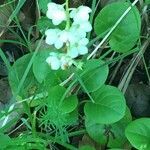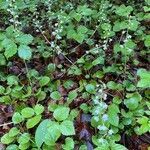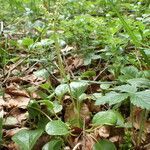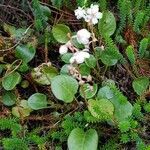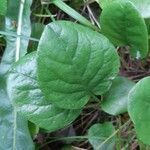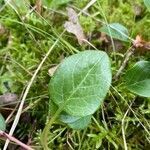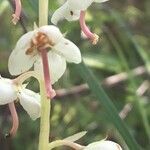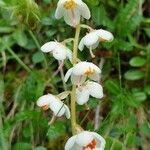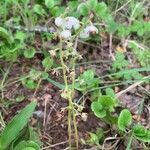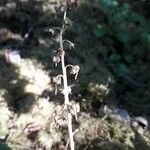Lvs firm, mostly broadly elliptic to subrotund, 2.5–7 cm, broadly rounded above, rounded to truncate or short-cuneate at base, and always somewhat decurrent on the petiole; scapes 1.5–3 dm, usually with 1 or 2 scale-lvs; sep oblong or ovate-oblong, 3–4 mm, nearly twice as long as wide, erose or undulate, not overlapping at base; pet white, 8–10 mm; anthers 3–3.5 mm, minutely cuspidate at base, abruptly narrowed into very short tubes above; style declined; 2n=46. Dry or moist woods and bogs; circumboreal, s. in Amer. to N.C., Ky., Ind., and Minn. July, Aug. Our plants are nearly all var. americana (Sweet) Fernald, as described above. The more northern, circumboreal var. rotundifolia, smaller in all parts, the sep 1.5–3 mm, the pet 5–7 mm, the anthers 2–2.5 mm, reaches our range in N.S.
A herb. It grows between 15-25 cm tall. The rhizomes is long and slender and branched. It roots at the nodes and also produces aerial stems. There is a ring of 4-7 leaves at the base. They are light green underneath. Leaves are oval and 3-6 cm long by 3-6 cm wide. There are 8-15 flowers in a group. The petals are white and curve inwards.
